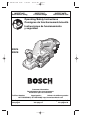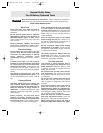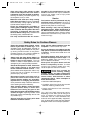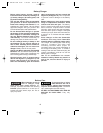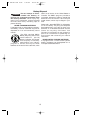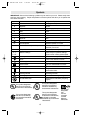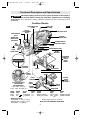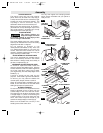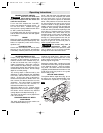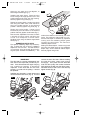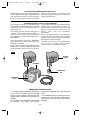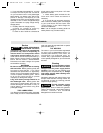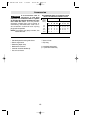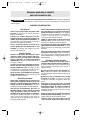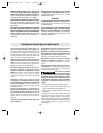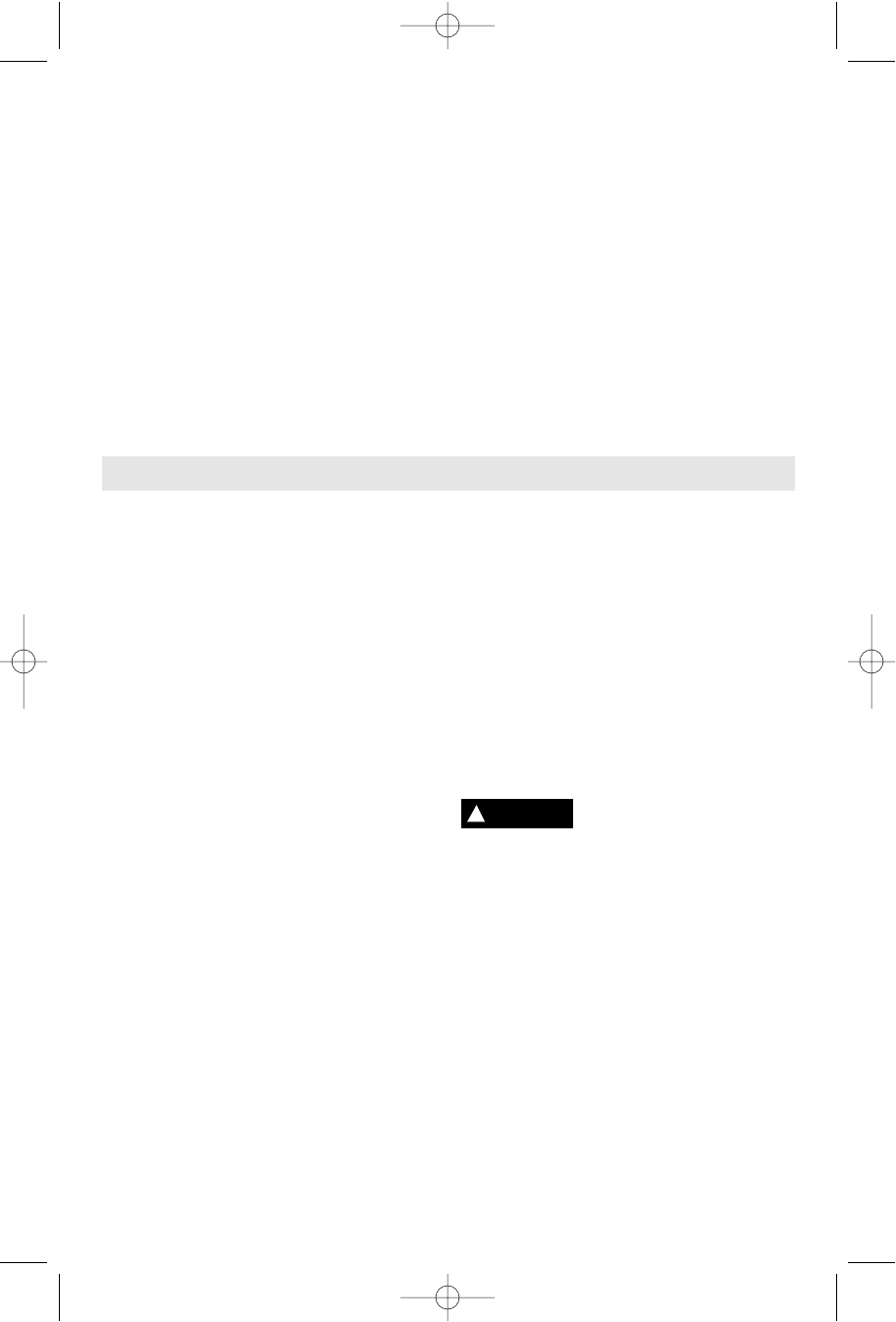
-3-
Safety Rules for Cordless Planers
Secure the material being planed. Never
hold it in your hand or across legs. Small
workpiece must be adequately secured so
that the rotating planer blades will not pick it
up during forward motion of the planer.
Unstable support can cause the blades to
bind causing loss of control and injury.
Always start the plane before blade is in
contact with the workpiece and allow the
blade to come to full speed. Tool can
vibrate or chatter if blade speed is too slow
at beginning of cut and possibly kickback.
Check the workpiece for nails, if there are
nails, either remove or set them well
below intended finished surface. If the
planer blades strike objects like nails it may
cause the tool to kickback and serious
personal injury may result.
Disconnect battery pack from tool or
place the switch in the locked or off
position before making any assembly,
adjustments or changing accessories.
Such preventive safety measures reduce the
risk of starting the tool accidentally.
After changing blades, rotate the blade
cylinder (cutter drum) to make sure
blades are not hitting any part of the
blade head housing and the blade locking
screws are tight. Spinning blades could
strike tool housing and damage tool as well
as possible injury.
Always hold the tool firmly with both
hands for maximum control.
Never pull the plane backward over the
workpiece. Loss of control may occur.
Do not put fingers or any objects into the
chip ejector or clean out chips while tool
is running. Contact with blade drum will
cause injury.
Disconnect battery pack from tool if it
becomes necessary to remove chips. The
blades are hidden from view and you may
be cut if blade is contacted.
Never place the plane down until the
blade is completely at rest. Surface
contact with coasting blade drum may
cause the plane to walk out of control.
Some dust created by
power sanding, sawing,
grinding, drilling, and other construction
activities contains chemicals known to
cause cancer, birth defects or other
reproductive harm. Some examples of
these chemicals are:
• Lead from lead-based paints,
• Crystalline silica from bricks and cement
and other masonry products, and
• Arsenic and chromium from chemically-
treated lumber.
Your risk from these exposures varies,
depending on how often you do this type of
work. To reduce your exposure to these
chemicals: work in a well ventilated area,
and work with approved safety equipment,
such as those dust masks that are specially
designed to filter out microscopic particles.
clips, coins, keys, nails, screws, or other
small metal objects that can make a
connection from one terminal to another.
Shorting the battery terminals together may
cause sparks, burns, or a fire.
Maintain tools with care. Keep cutting
tools sharp and clean. Properly maintained
tools with sharp cutting edge are less likely
to bind and are easier to control.
Check for misalignment or binding of
moving parts, breakage of parts, and any
other condition that may affect the tool's
operation. If damaged, have the tool
serviced before using. Many accidents are
caused by poorly maintained tools.
Use only accessories that are recom-
mended by the manufacturer for your
model. Accessories that may be suitable for
one tool may create a risk of injury when
used on another tool.
Service
Tool service must be performed only by
qualified repair personnel. Service or
maintenance performed by unqualified
personnel may result in a risk of injury.
When servicing a tool, use only identical
replacement parts. Follow instructions in
the Maintenance section of this manual.
Use of unauthorized parts or failure to follow
Maintenance Instructions may create a risk
of shock or injury.
!
WARNING
BM 2610917139 6/02 7/10/02 10:50 AM Page 3



